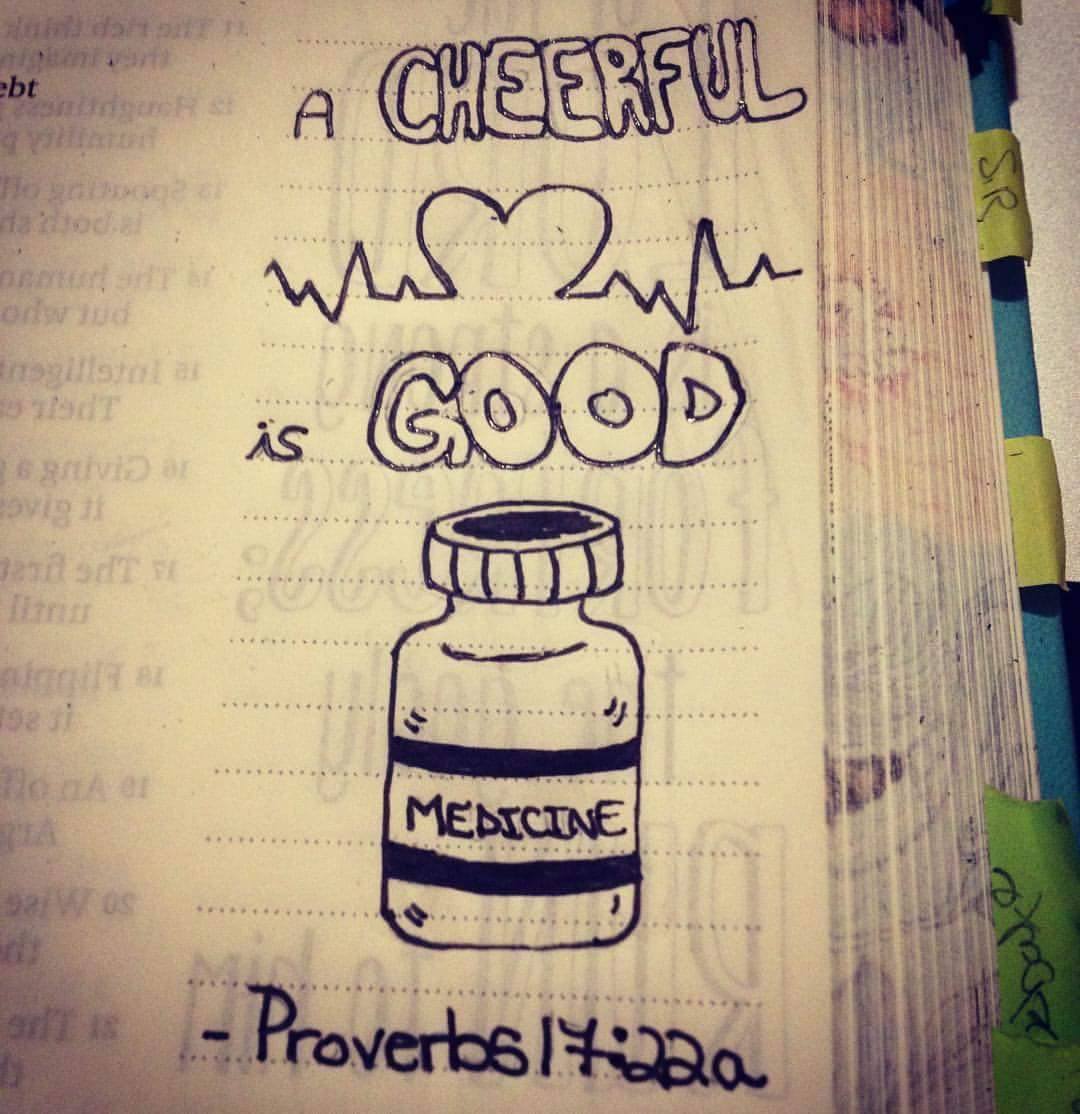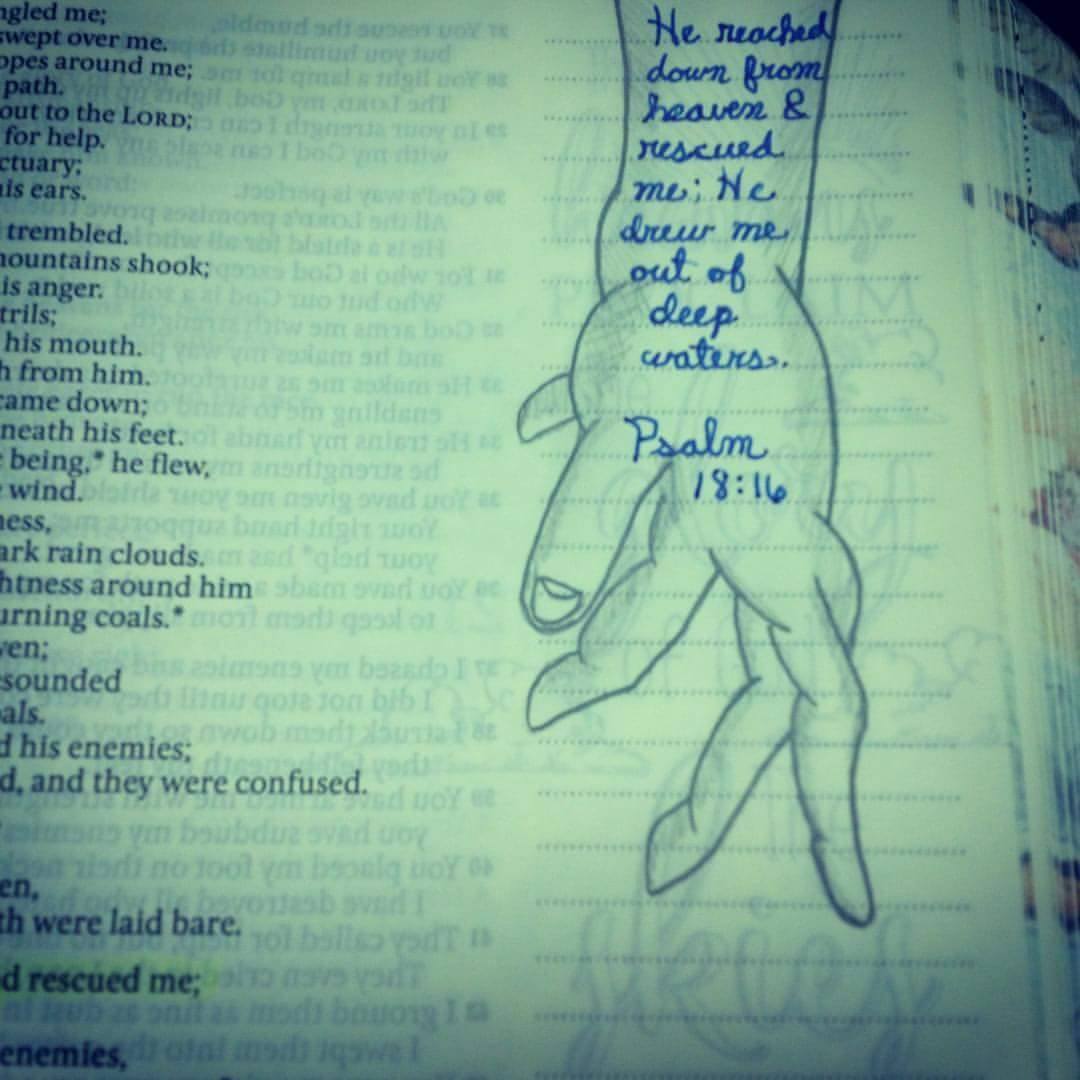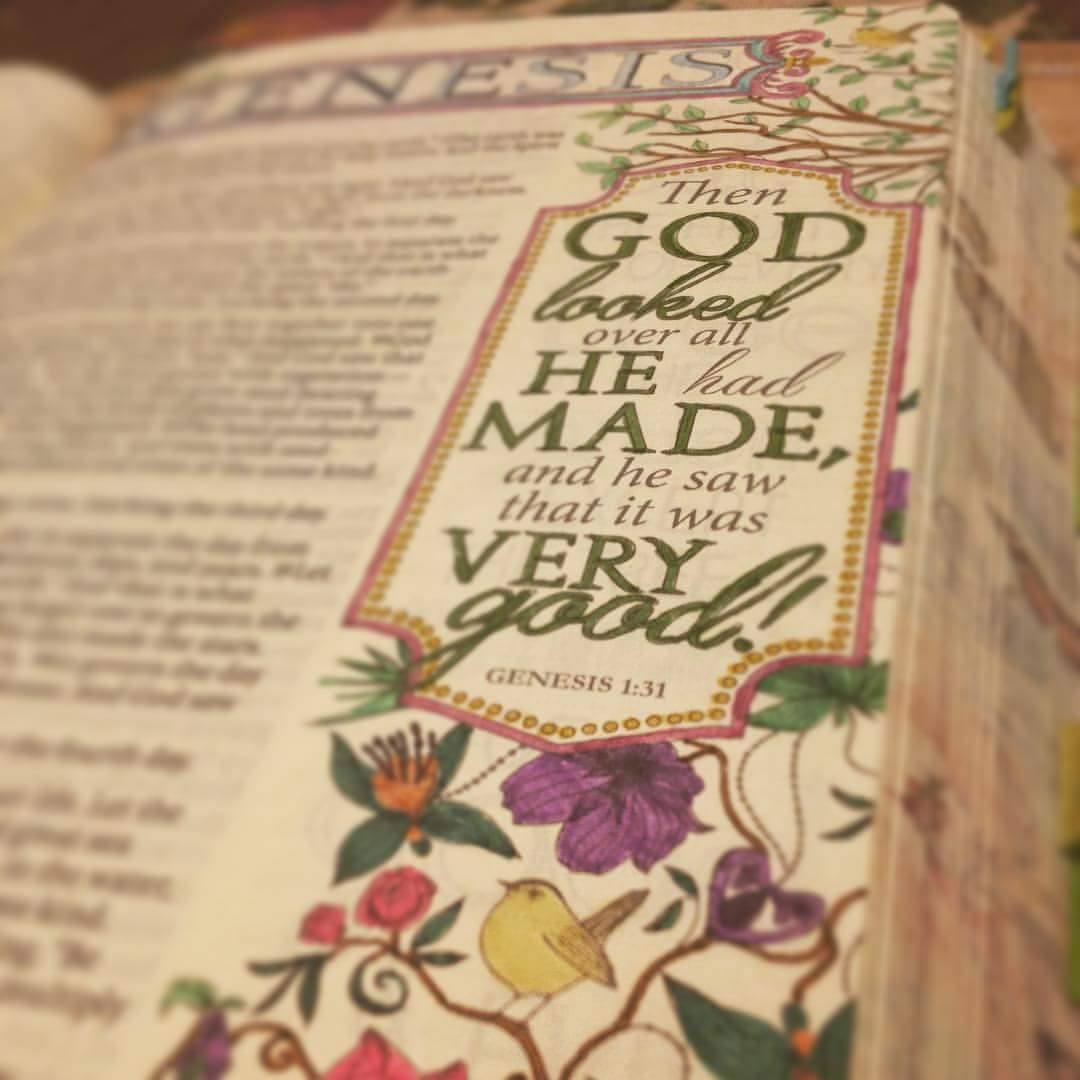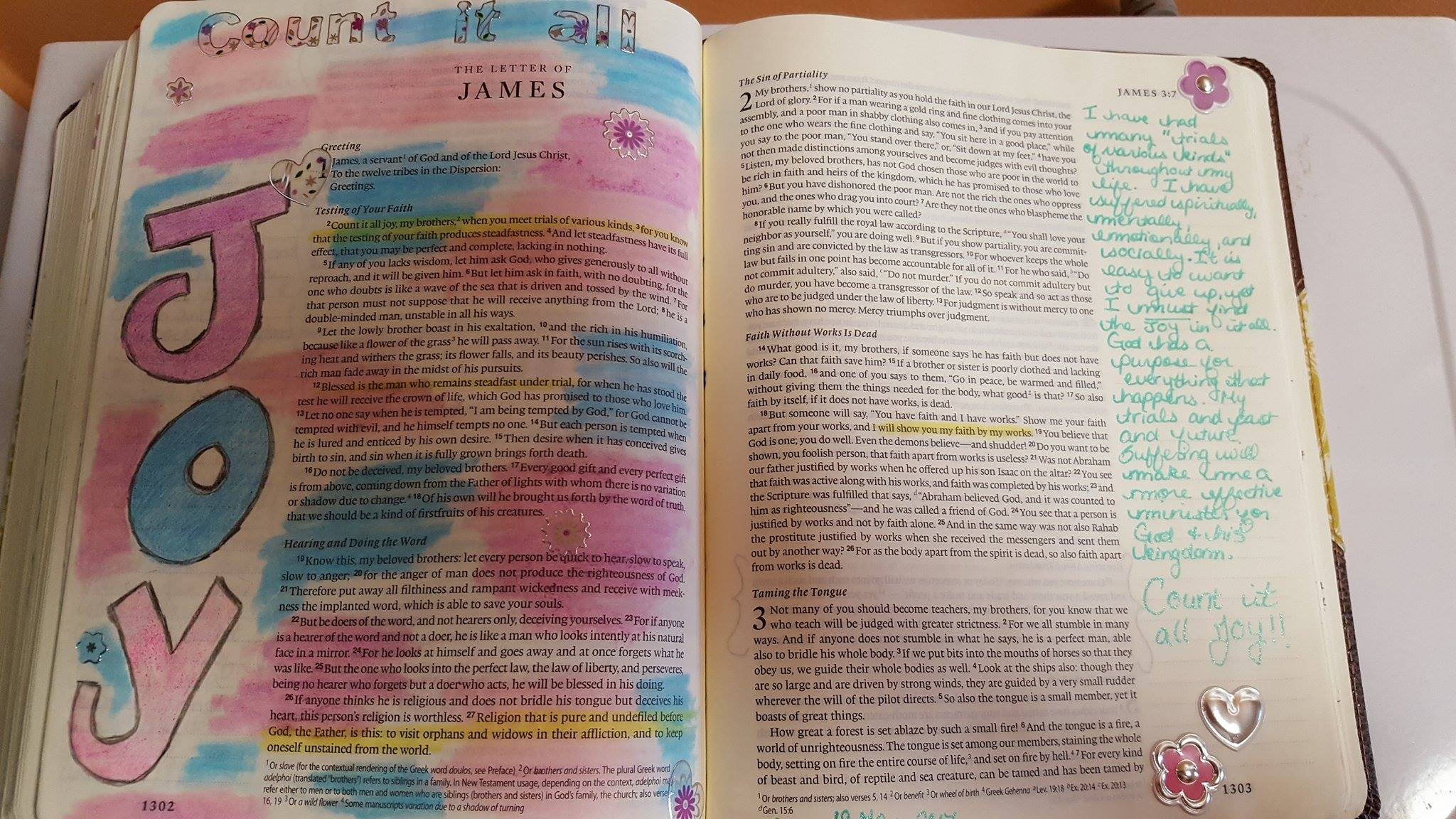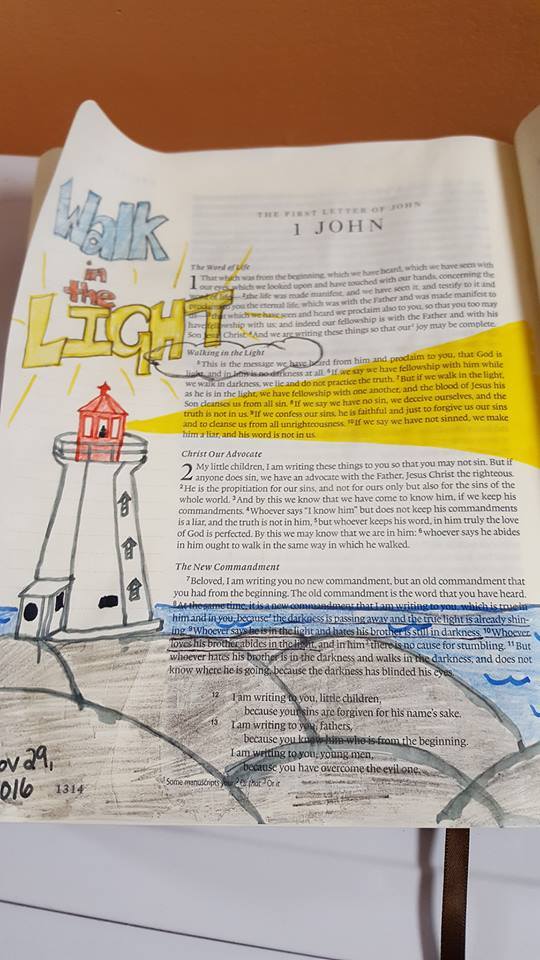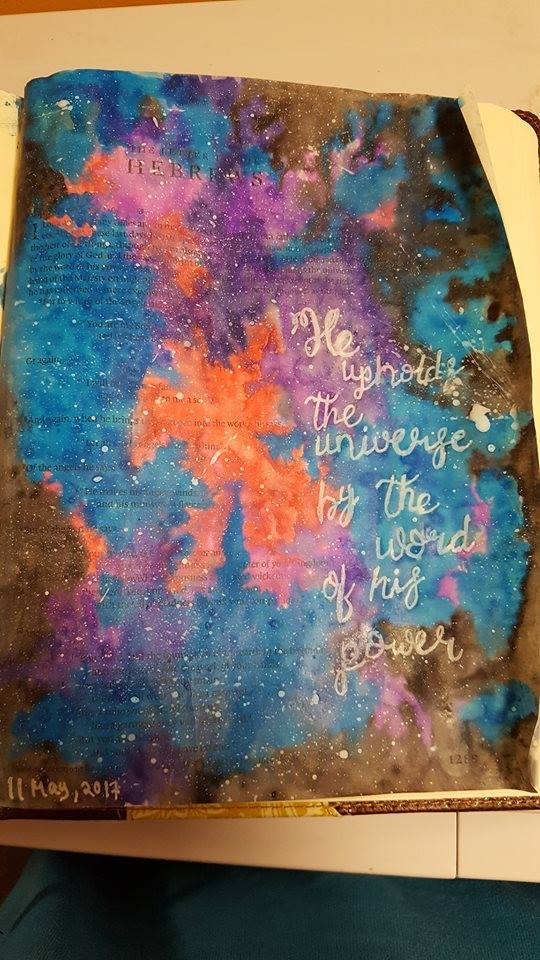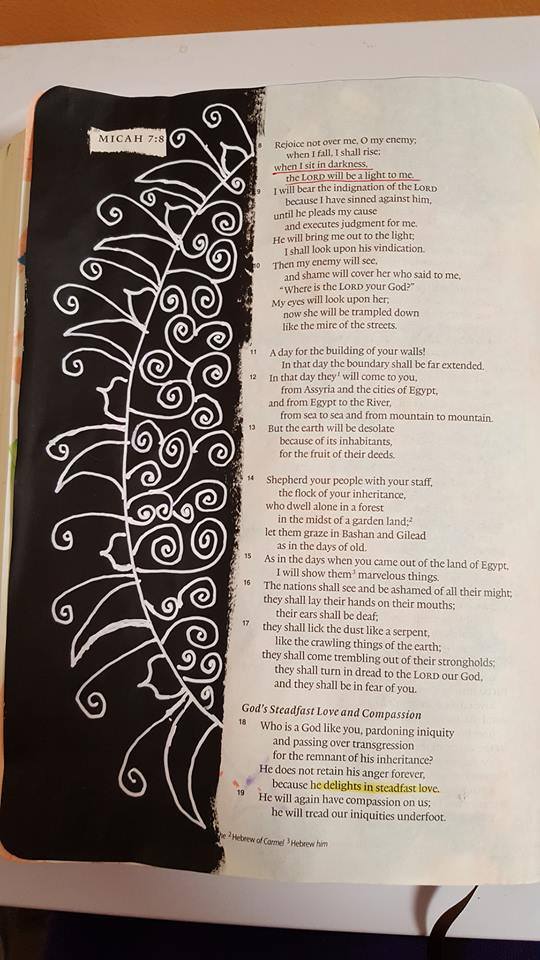Devotional Art: Bringing Color to Your Time with God
Over the last two years or so I noticed with appreciation some artwork done by students at Acadia Divinity College. But it was not simply paintings or drawings, but artwork done in their Bibles. I appreciated the images not only because I am a terrible artist, but because it displayed a wonderful integration of the arts with Christian devotion. So much of Church instruction on devotional time is simply "read and pray" or "use this new devotional book." But on display here was a practice that I think beautifully integrates using one's gifts as worship to God and using one's gifts to express devotion. As Creator and Designer of the universe — the one who stretched out the neck of the giraffe, made the rolly face of the Manatee, put a duck-bill on a Platypus, and put the brilliant colors in the skyline — I have no doubt that God delights in beautiful and artistic expression of His Word.
In this post I interviewed my two ADC students who regularly share their devotional art on social media. At the bottom you will find some examples of their work as well. Thanks Samyi and Susan for sharing!
First, what is it you call what you do. Bible Art? Devotional art?
Susan: Either of those terms work, but I generally refer to it as Bible journaling.
Samyi: I prefer calling it Bible Journalling because I do not see my work as big masterpieces. Most of my ‘work’, so to speak, are little pictures, colourful bible verses, notes from a sermon, quotes, prayers, special dates, and they all are there to help Scripture come to life for me.
How long have you been doing it for? Who introduced you to it?
Susan: I started Bible journaling in September of 2016. I used to be the type of person who would not even underline something in my Bible. Over the summer of 2016, Samyi showed me her own journaling Bible, and I was intrigued. That September I ordered a fancy Bible specifically for the purpose of drawing, writing, painting, etc in it. Since then it has been my favourite and most rewarding (in terms of connecting with God) form of devotion.
Samyi: I have been Bible Journalling for over a year now. No one really ‘introduced’ me to it. I was looking for a more reader-friendly bible that I could write notes in, and I found out that there was the NLT Inspire Bible on pre-order through Amazon. I pre-ordered it a few months before it came out. In the waiting time, I got my markers and pens from Michael’s and Walmart. I did not really know what I was going to be doing, so I did a lot of things through trial-and-error.
When someone first sees a page of your Bible with artwork in it, what kind of responses do you get?
Susan: I will start off by saying my Bible is filled with entries that I would never show anyone. I treat it very much like a journal that I share with God. There are notes and prayers included on some pages that are just between God and me. The artwork that turns out pretty terrible—it happens!—also doesn’t get shown. The pages that I do show I think look at least somewhat nice and have minimal wording that is not obviously personal. With all that said, the responses I usually get are positive in some way or another. People will either like the art itself, or they will be intrigued by the fact that I am “decorating” my Bible—much like I was first intrigued when Samyi first introduced me to it. Some people are genuinely surprised that there is so much I can actually do to a thin Bible page, and it will lead to discussions about supplies and techniques. (Unfortunately no conversations have led to discussion about faith yet.)
Samyi: I get a lot of “Wow! Did you colour/draw this?” Most people are really interested and intrigued by the creativity and how fun it looks. I was concerned people were going to think I was crazy for drawing in a bible, but I have never had someone dislike it.
While devotions and Bible reading are (or should be) a regular habit of Christians, you have taken this habit and practice it in a very different (and beautiful) way. How do you explain what you do and why you do it?
Susan: The reason I ultimately chose to dive into Bible journaling is because, as a new Christian at the time (only about half a year at that point), I wanted to increase my prayer life, but I have a very difficult time focusing. My prayers always get derailed just like most of my other thoughts, and I felt like this was preventing me from growing spiritually. When I Bible journal, I will either search out a passage on something that I need to pray about, or I will come across something as I flip through the pages (or as I am gradually reading front to back) and it will stand out to me. Once I start reading it and praying over it, even if my thoughts stray, the prayer stays in my heart as I am concentrating on the art for the passage. This is the only way I have discovered thus far that I am able to truly focus in prayer and devotion.
Samyi: Like I stated earlier, it makes scripture come to life. When I draw a picture, it most likely is something I pictured while reading a passage, so I draw it as a way of really solidifying what I read. It could be as small as my drawing of a cartoon house beside Hebrews 3:6 that says “And we are God’s house” (NLT), or as big as my drawing of an angel wing beside Psalm 34 because it says "For the angel of the LORD is a guard; he surrounds and defends all who fear him." (Ps.34:7). I write important dates beside certain passages, like my engagement ring has Matthew 19:4-6 inscribed inside of it, so by that passage I have the date Chris proposed to me. I will write quotes from a chapel service or sermon in my Bible and then draw clouds around it to make it pop out, or draw clouds or scrolls around passages to make them pop out because it popped out at me while listening or reading. I do all of this because I know God speaks to me through Scripture in a way that I will listen. Bible journalling is my love language, and God speaks it fluently.
Can you give an example or two of a time when the processing of drawing illuminated the meaning of a passage for you?
Susan: This has not really happened for me during the process. There have been times when a passage would be illuminated somehow in my mind (through personal reading or study or an aha moment, in a lecture, through a sermon, etc), and then afterword I would journal it. There have been times, however, when I realized either during or shortly thereafter that God was using the content of the passage to speak to me about something. It was through Bible journaling that I began learning how to listen to God.
Samyi: One example is my drawing where I have a hand reaching down the page [see image below] with the verse that stood out to me, "He reached down from heaven and rescued me; he drew me out of deep waters.” (Psalm 18:16). Of course, I am not David, I do not have Saul and his army chasing after me, but there have been times where I, like David, feel like I am in ‘deep waters’. David knew that God was there with him, God was the one who rescued him from Saul and his enemies. On that particular day, I pictured God reaching His hand down from heaven, very gently and slowly. He takes great care in lifting me out of deep waters. I knew I had to draw it, so I did. Now, every time I go over that psalm, which, being one of my favorites means I go over it often, that picture of God lifting me up and holding me in His hand always comes back. It is a wonderful reminder that God is always with me.
For others who are interested in transforming their devotional time like this, is there a process you’d recommend?
Susan: It’s such a simple process, and you can jump in as much or as little as you want. My art supplies have grown quite a bit since September, but you can start out with just a package of coloured pencils. Any Bible can be used, but if it is not a journaling Bible (NIV example), there is far less room for expression in the margins.
Samyi: When it comes to Bible Journalling, you cannot sit in front of your bible and think “What now am I going to colour? What will I draw today?” It is still Scripture, it is still God’s Word sitting right in front of you. Take time to pray, asking God to speak to you through His Word, through the pictures that pop up as you read Scripture, and pray that He will help you listen.
Second tip is to read slowly. We live in a busy world, we are always on the go, and sometimes that gets into our Bible reading time. We are so quick to get the reading plan we have done that we take nothing in. Read slowly, even if it means not finishing all of what your “Read the Bible In 90 Days” plan recommends for the day, because reading slowly gives you a better chance of being able to listen and understand.
When a passage does pop out at you, or you picture an image that you want to draw, or you hear God say something to you while reading, do not be shy to start journalling. I am no artist, despite what people see on Instagram. I drew out that hand on scrap paper about 4 or 5 times before I was satisfied enough to then draw it in my Bible. I do Google images to find one close to what I saw, and use those as guidelines to look at while I draw. It is 100% okay to do those things, as long as you keep it as a time of listening to God, rather than drawing something amazing for the world to see.
Lastly, I want to state that, just because you journal in your bible, does not mean you have to share it with the world. Many people in the bible art/bible journalling community do share their creativity and how they do things with others, but you do not have to. There are many things I have not shared online because it is either a prayer I wrote or something very personal to my heart. I actually wrestled with whether or not I should share my journalling online, and I came to the conclusion that I have a tool that could inspire others with Scripture, so I share some of my journalling when I feel like maybe someone, even just one person, might need some Scripture that day. If there ever is a time that you feel you are journalling to make a post, I would say you should sit and wrestle with that a while before continuing.
Finally, for those same people, is there a particular Bible or Bibles you recommend, and perhaps particular types of pens or pencils?
Susan: I prefer the ESV single column journaling Bible (the translation doesn’t mean so much to me; the key words here are “single column” and “journaling Bible”). Some journaling Bibles have some artwork already on certain pages that the person can then colour in. I chose not to go this route because I wanted the freedom to put whatever I wanted on every single page. For people who find that daunting though or they just like colouring, those other Bibles are great too.
For writing, my favourite pens are Gelly Roll pens that can be bought as sets or individually. These will ghost through (meaning that you can see them slightly from the other side of the paper), but they flow so beautifully that I think it is worth it. Regular ballpoint pens are fine too, and they cause less ghosting. I never journal in pencil unless I am colouring with coloured pencils or drawing something that will eventually be coloured over. I just use regular mechanical pencils for that. For coloured pencils, I prefer Crayola Twistables (they are never sharpened, so they are never overly pointy on the delicate paper). A lot of it is trial and error.
It does not need to be an expensive endeavour at all, or anything elaborate. If you do move beyond pens and coloured pencils, however, it is trial and error. Crayola watercolour paints, for example, bleed through the pages terribly, even if you prep the page with gesso. I only know this because I’ve tried it myself. Other watercolours (still cheap!) don’t require page prep at all. Trial and error is part of the fun of it. Because it is a devotion and prayer between the person and God, my advice is to not worry about perfection and attempting to make a masterpiece. I stopped being disappointed long ago when something bled through my pages. In my opinion, someone Bible journaling shouldn’t be going into the experience with the mindset that they are creating art. I go in each and every time with the mindset that, if something doesn’t turn out the way I have pictured in my mind (which happens often!), that is okay because the purpose of the devotional period was actually not to create art but to grow in my relationship with God. The art is just a means to an end.
Samyi: Of course, I want to recommend the NLT Inspire Bible as a starter. It has pre-printed scriptures and pictures for you to colour in, but has plenty of room for your own creativity! If you are looking for a more literal translation of Scripture, I would recommend the ESV single column journalling bible. When it comes to pens or pencils, I always use mechanical pencils (doesn’t matter the brand) because I find them easier to draw with. I use Sharpie fine tip pens for most of my colouring, but I have also used pencil crayons and markers, which I use Crayola. I personally would invest in PIGMA Micron pens because the few times I have used them, they worked amazing and did not bleed. When it comes to using markers, paints, and pens that bleed through thin bible pages, you will need to put a layer of white gesso on your page, which you can buy at Michael’s or any other art’s store. I am not sure if this happens with others while using gesso, but it tends to fade the writing on the page, even with the thinest layer, so I tend to stick to using things that do not bleed.
Thanks so much Samyi and Susan! I hope this inspires others to engage God and His Word in creative ways too! And check out some of their pages below!
